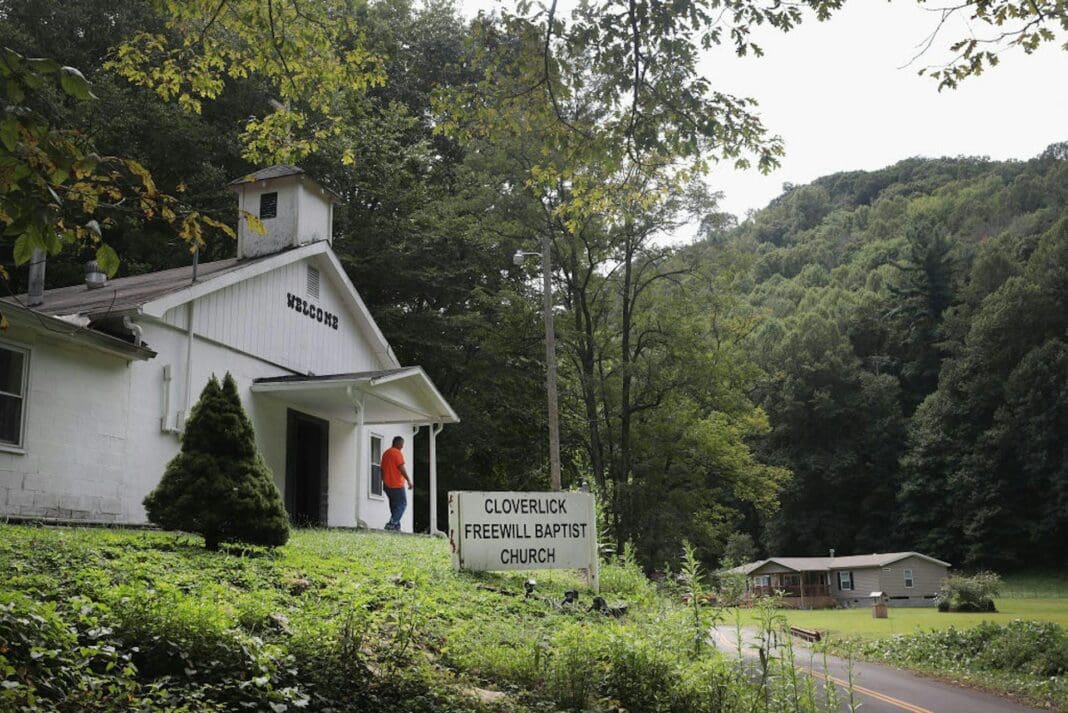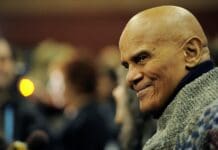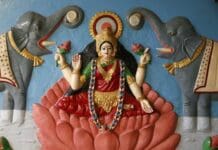In October 2025, Cecil Roberts will officially retire from his role as president of the United Mine Workers of America. A sixth-generation coal miner, he has led the union for 30 years. Only one man held the role longer: John L. Lewis, whom many consider one of the most important labor leaders of the 20th century.
Roberts has seen the union through an especially difficult period for the coal industry and grew up immersed in it. He was raised in Cabin Creek, West Virginia, where his great-grandmother – an activist in her own right – let miners camp on her property during a legendary strike in 1912. Bill Blizzard, his great-uncle, led miners during the Battle of Blair Mountain, the largest labor uprising in U.S. history. Both of his grandfathers died in mine accidents.
And there’s another way Roberts is steeped in Appalachian history: Before an audience of workers, observers have often noted, he speaks like a preacher. Roberts likens miners’ struggles to biblical stories, references the power of God and the teachings of Jesus, and speaks in the dynamic cadences found in an Appalachian church.
“Be like Jesus,” he told a rally in Charleston, West Virginia, in 2015, opposing a “right to work” bill that allowed workers in union-run shops to opt out of paying dues. “Jesus saw the money changers in the temple, and Jesus drove the money changers from the temple. So let me tell the National Right to Work Committee, the Chamber of Commerce, the Koch Brothers, and all those who gave money: you got your money’s worth, but we’re not for sale in West Virginia.”
“How many of you have been to a Baptist church? We’re going to take up a collection. It is altar call time,” he continued. “Now, I’m going to ask you something: Are you fed up? Let me hear you say, ‘Fed up.’… Are you so fed up that you are now fired up? Let me hear you say, ‘Fired up!’”
Capping off the rousing call-and-response, he shouted, “God bless all of you, you’re the salt of the earth!”
Roberts’ style is a glimpse into a bigger story. For over a century, coal has transformed central Appalachia: from the shape of the landscape to place names, and from folk music and crafts to economic conditions.
All the while, religion has been transforming in the mountains, too. Labor and religion are deeply entangled here – a subject I explored in my book “Work and Faith in the Kentucky Coal Fields: Subject to Dust.”
In the 1880s, two groups rushed into the central Appalachian Mountains: industrialists seeking coal, and missionaries seeking moral reform. Both changed the region forever, and their stories were intertwined.
At the time, central Appalachia was widely depicted in the popular press as a backward, ignorant region whose mountainous terrain kept its people isolated, outside the flow of progress – a stereotype still common today. Equating economic progress with moral progress, many Americans assumed that developing industry would lift people out of what they perceived as fatalism and superstition.
The coal industry used this idea to promote its rapid exploitation of mountain resources. Companies built railroads to connect the region to the national market, developed industrial coal mines and reshaped the central Appalachian economy. Missionaries opened churches, schools and camps.
Company-owned coal towns encompassed miners’ lives. People who had long farmed for themselves and lived, as the Bible told them to, “by the sweat of their brow,” became dependent upon coal companies as mine development shrank the size of family farms. Not only did employers own the miners’ houses, but they also paid workers in “scrip,” which was redeemable only at the company store.
Many company towns included theaters, offered films and music, and even built churches and paid pastors’ salaries. These were typically mainline Protestant churches, such as Methodist or Presbyterian.
To some Appalachian natives, these denominations were known as “railroad religion” because of the way they entered the mountains. And, for many miners, these were the churches of management. When there was labor unrest, the coal town churches tended to side with the companies, advising miners against strikes or agitation.
The churches of most miners born in central Appalachia, meanwhile, were in the mountain communities – independent Baptist or Holiness congregations whose pastors were usually miners themselves.
Pastors preached about the dangers and sacrifices miners faced deep underground, in an age of few regulations. God was on the side of the oppressed and downtrodden, they stressed – and those who gained at others’ expense would ultimately face divine judgment.
Their passionate preaching was meant to inspire action, whether it was committing one’s life to Jesus or to the union. Labor rights were deeply understood as religious issues, rooted in Christian concerns for justice and care.
John Sayles’ 1987 film “Matewan” powerfully depicted the divided role that religion played in West Virginia’s coalfields. One preacher, played by Sayles, equates the union with “the Prince of Darkness.” Another, a young miner, advocates in biblical terms for the union’s righteousness and helps to lead a strike. The result was the Matewan Massacre of 1920: a bloody battle between miners and armed guards hired by the mine owners.
Miner preachers and independent churches were central to the organization of miners in eastern Kentucky in the 1930s, too, during another period of violence between mine operators and miners over conditions, wages and unionization. It was during this time that miner’s wife and singer Sarah Ogan Gunning penned “Dreadful Memories,” turning the traditional hymn “Precious Memories” into a visceral depiction of miners’ struggle and a call for unionization:
Today, it is still not surprising to find religious – particularly Christian – rhetoric in labor organizing. United Auto Workers President Shawn Fain is another example of a union leader whose speeches draw from the Bible.
But the dynamics of religion and class forged by industrial mining have shaped central Appalachia’s culture in lasting ways particular to the coalfields. The history of labor struggle, infused with religious idioms, is a source of identity and values evident in everything from union meetings in churches to prayers on picket lines.
Today, the United Mine Workers of America is focused less on coal itself, which miners know cannot last forever. The union represents members in other sectors, too, including public employees, manufacturing, health care and employees of the Navajo Nation. It has also focused its work on an equitable transition to renewable energy: one that accounts for the economic, cultural and environmental destruction that a single-industry economy has wreaked on central Appalachia.
Likewise, the United Mine Workers of America has fought to hold coal companies to their pension and health care obligations toward retired and sick miners whose work fueled the country and made companies rich.
And that struggle, Roberts would say, is a religious one as well.
This article is republished from The Conversation, a nonprofit, independent news organization bringing you facts and trustworthy analysis to help you make sense of our complex world. It was written by: Richard J. Callahan, Jr., Gonzaga University
Read more: Carbon offsets bring new investment to Appalachia’s coal fields, but most Appalachians aren’t benefiting Invoking noble coal miners is a mainstay of American politics Combatting stereotypes about Appalachian dialects
Richard J. Callahan, Jr. does not work for, consult, own shares in or receive funding from any company or organization that would benefit from this article, and has disclosed no relevant affiliations beyond their academic appointment.














